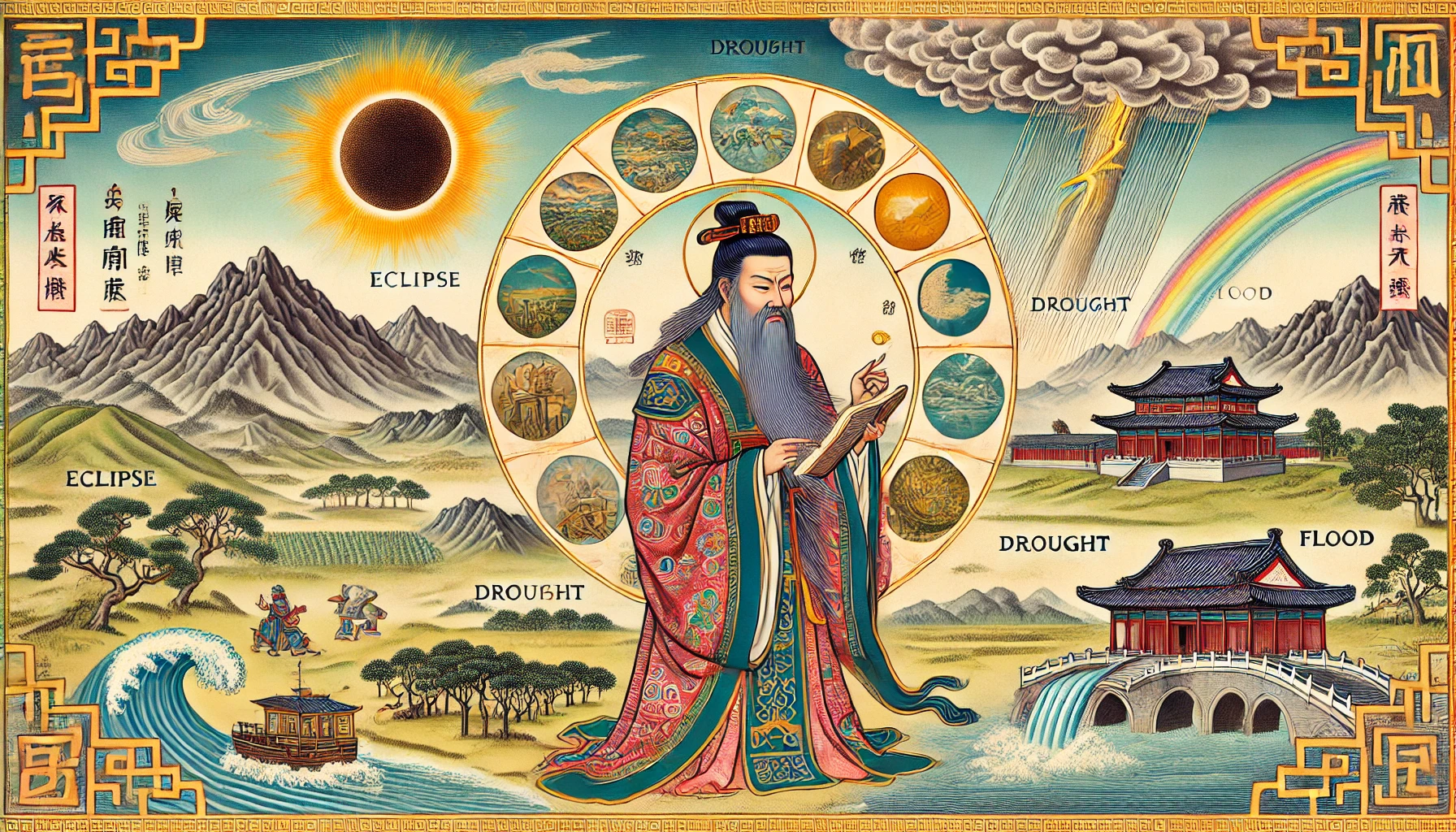The theory of jae is the idea that the heavens send disasters to warn monarchs who have lost their virtue, and was systematized by Dong Zhongxue. The theory that a monarch’s true condition is revealed by jai became the basis for political discussions, but later generations criticized and modified it. Zhu Xi considered jieyi as a natural phenomenon, but also used it as a political boundary.
A representative East Asian discussion of the causal relationship between natural phenomena and human history is the theory of disaster. This idea originated in ancient China and is based on the belief that the heavens influence human behavior, which in turn causes natural phenomena to occur. The Han Dynasty’s Dong Zhongzhi systematized the theory by combining the theory of heavenly judgment, which states that the heavens reprimand monarchs who have lost their virtue, with the theory of heavenly sensitivity, which states that the heavens and humans are sensitive to each other through the yin and yang qi common to humans and the heavens. According to him, when a monarch commits a misgovernment, the heavens, sensitized by the changed yin and yang qi, issue warnings through jai, such as droughts, floods, solar and lunar eclipses, etc. In this case, the jai was a warning to the monarch about the monarch’s actual situation, as well as a proof that the monarchy originated from the heavens.
The fundamental idea behind the theory is that the heavens and humans are closely connected. It was believed that changes in the heavens would affect the human world and vice versa, and that human actions would be reflected in the heavens. This cause-and-effect relationship took the form of natural phenomena that warned people if the monarch’s rule was not correct. For example, if a drought or flood occurred, it was interpreted as a sign of the monarch’s lack of virtue, and the monarch was expected to make efforts to correct it.
The ambivalent nature of the theory of jie provided a rationale for subjects to engage in political discussions, and was embodied in the tradition of the monarch asking for directives and subjects responding. However, after the Eastern Zhongshu, the individualized response method of explaining human history as a cause and disaster as an effect in a one-to-one correspondence was criticized as being too forced. This method led to the tendency of prophecy, which led to the tendency of responding to human events as a result of jai as an omen of human events, and also became an excuse for monarchs to suppress their subjects who spoke directly to them for deceiving the people with their words.

Since then, the prophetic interpretation of jai has been criticized and the theory of natural selection has been denied. However, the theory of jie did not disappear from the political scene. By the Song Dynasty, Zhu Hui embraced the trend of not considering solar and lunar eclipses as jie, which had become predictable due to the development of astronomy, and considered jie as a natural phenomenon that was fundamentally difficult to explain by reason. He tried to use astronomical knowledge to explain phenomena such as solar and lunar eclipses naturally, but he did not completely abandon the framework of jie theory. This was because the theory was seen as an important means of keeping monarchs vigilant and urging proper politics.
However, the abandonment of jae theory, which up to that point had provided a safe place for the press to operate while encouraging the monarch to respond positively to jaei, would mean the loss of a useful political mechanism for the subjects. For this reason, he clung to the ash theory to find an appropriate way to keep the monarch on guard. Instead of individualized responses to jai, he proposed a general response theory that the heavens would respond to the accumulation of faults and misdeeds by the monarch, causing anomalous natural phenomena to occur, reducing jai to a matter of cultivating the monarch’s heart and mind, and prolonging the historical life of jai theory.
Thus, beyond merely linking natural phenomena to human history, the theory was used as a tool to assign moral responsibility to monarchs and call for political stability and good governance. This gave it an important place in East Asian political thought, and its influence can still be seen indirectly today. Re-theorizing emphasizes the intimate connection between nature and humanity, politics and morality, which has important implications for today’s environmental issues.
 I’m a blog writer. I want to write articles that touch people’s hearts. I love Coca-Cola, coffee, reading and traveling. I hope you find happiness through my writing.
I’m a blog writer. I want to write articles that touch people’s hearts. I love Coca-Cola, coffee, reading and traveling. I hope you find happiness through my writing.